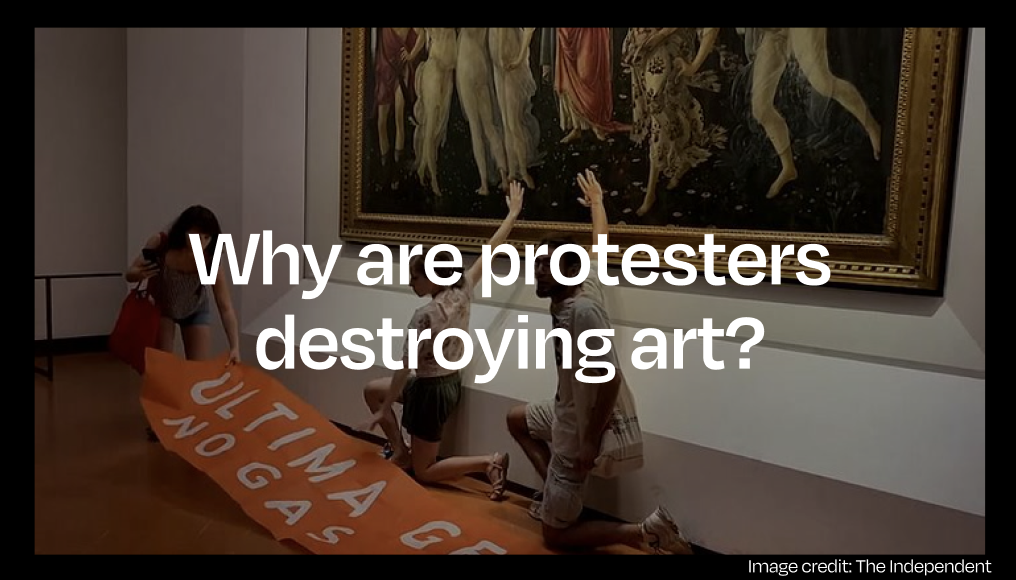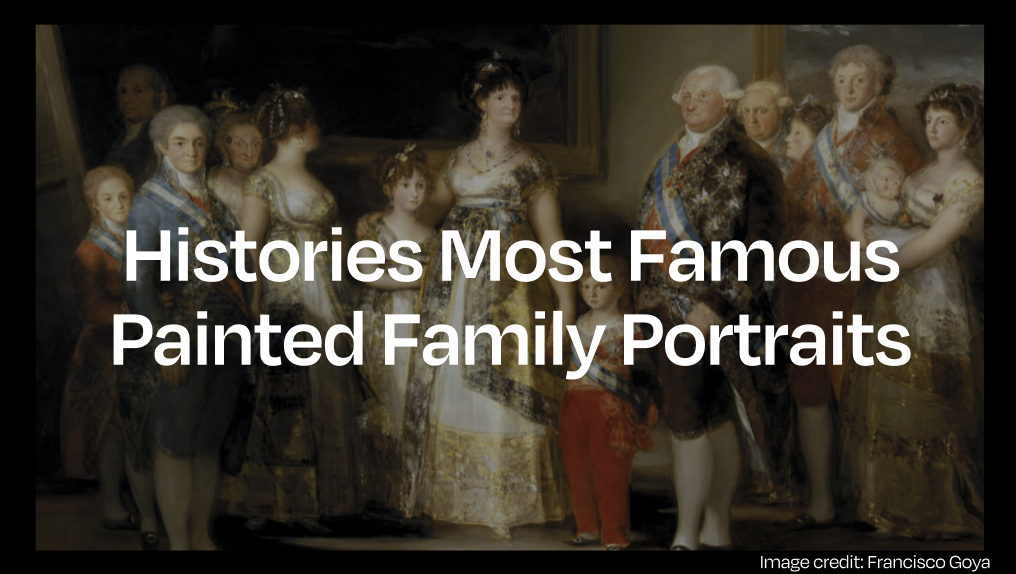
Histories Most Famous Painted Family Portraits
Painted family portraits have been a cherished tradition throughout history. These artworks not only capture the likeness of a family but also provide a glimpse into the lives, values, and social statuses of the individuals portrayed. Renowned artists, both celebrated and obscure, have undertaken the task of immortalising these familial bonds on canvas.
-
The Arnolfini Portrait (1434) – Jan van Eyck
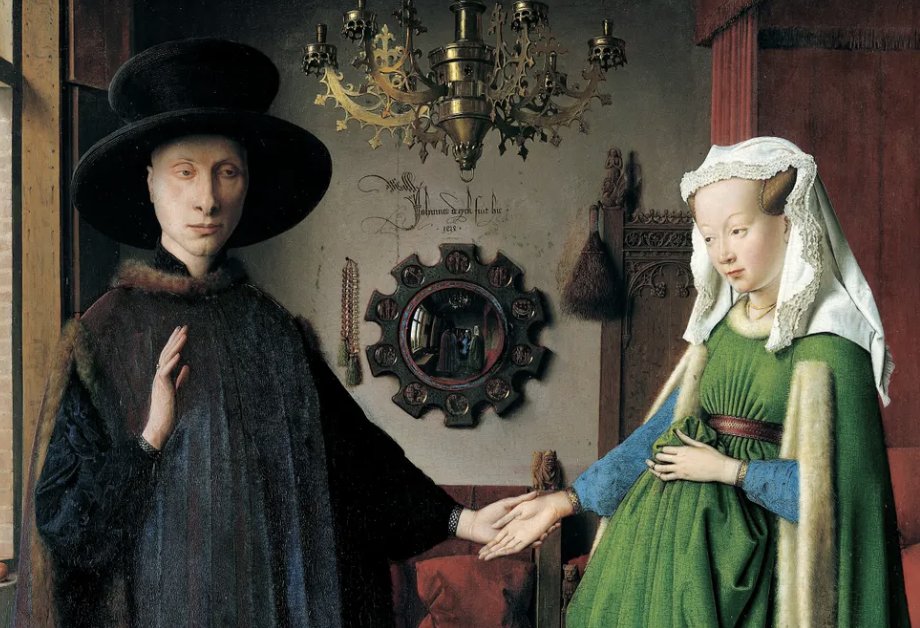
Beginning in the 15th century with “The Arnolfini Portrait” by the Flemish artist Jan van Eyck. “The Arnolfini Portrait” goes by many names as its origin has been speculated and changed throughout the years. Originally, the painting was thought to be a portrait of Giovanni di Arrigo Arnolfini and his wife Jeanne de Cename (Cenami). However, documents discovered during the 1990s of ducal accounts show that Giovanni di Arrigo Arnolfini and Jeanne de Cename did not wed until 1447, which was 13 years after the portrait was completed.
Art critics and historians now believe the couple to be a cousin of Giovanni di Arrigo Arnolfini and his wife. Despite records showing the wife passed a year prior to the completion of the painting. Many believe the portrait to be a documentation of their marriage whilst others believe it to be a memorial portrait.
-
The Family of Charles IV (1800) – Francisco Goya
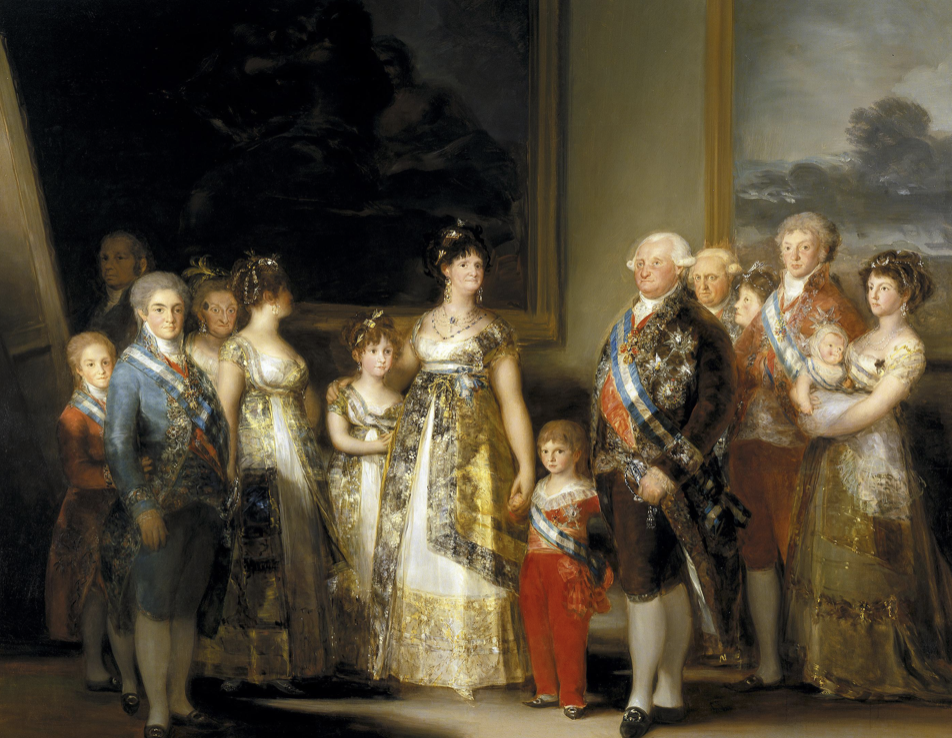
Moving forward to the 19th century, we encounter Francisco Goya’s “The Family of Charles IV.” This Spanish royal family portrait offers a window into the tumultuous political climate of the time. Goya’s keen eye for detail and psychological insight is evident as he portrays the complexities of family dynamics and political power.
In this painted family portrait, we see King Charles IV, his queen, Maria Luisa, and their numerous children. Goya masterfully captures the tension and rivalry among family members vying for their father’s favour. The portrait serves not only as a record of the Spanish monarchy but also as a reflection of the precarious state of European politics during the Napoleonic era.
-
The Ambassadors (1533) – Hans Holbein the Younger
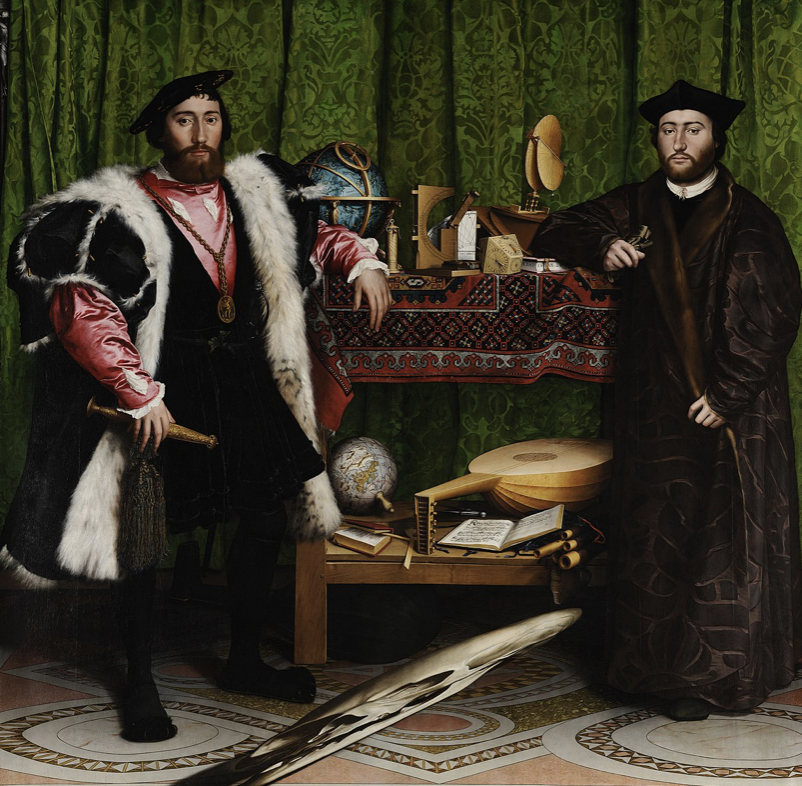
Hans Holbein the Younger’s “The Ambassadors” is a fascinating family portrait that takes a unique approach to storytelling. The two men depicted, Jean de Dinteville and Georges de Selve, were close friends and diplomats, and their portrait conceals a wealth of symbolism.
At first glance, the objects strewn across the table appear as an assortment of unrelated items. However, when viewed from a certain angle, they form a skull – a memento mori, reminding us of the transience of life. The painted family portrait’s intricate details and enigmatic symbolism challenge viewers to ponder the deeper meaning behind this seemingly straightforward scene.
-
The Family of Henry VIII (c. 1545) – Unknown Artist
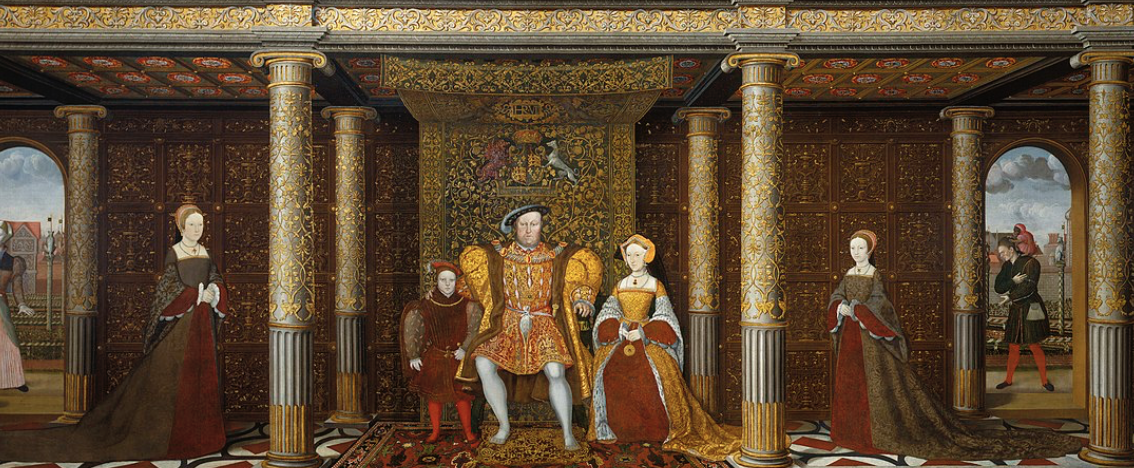
“The Family of Henry VIII” is a mysterious and unfinished painted family portrait that offers a glimpse into the Tudor dynasty during the reign of Henry VIII. While the identity of the artist remains unknown, this work is notable for its portrayal of Henry’s three legitimate children: Edward VI, Mary I, and Elizabeth I.
The painted family portrait serves as a testament to the Tudor dynasty’s precarious position, marked by religious and political turmoil. The visual cues, such as the inclusion of the Tudor rose and the prominence of each child, convey a sense of dynastic importance and the desire for continuity in a tumultuous period of English history.
-
The Haymakers (1785) – George Stubbs
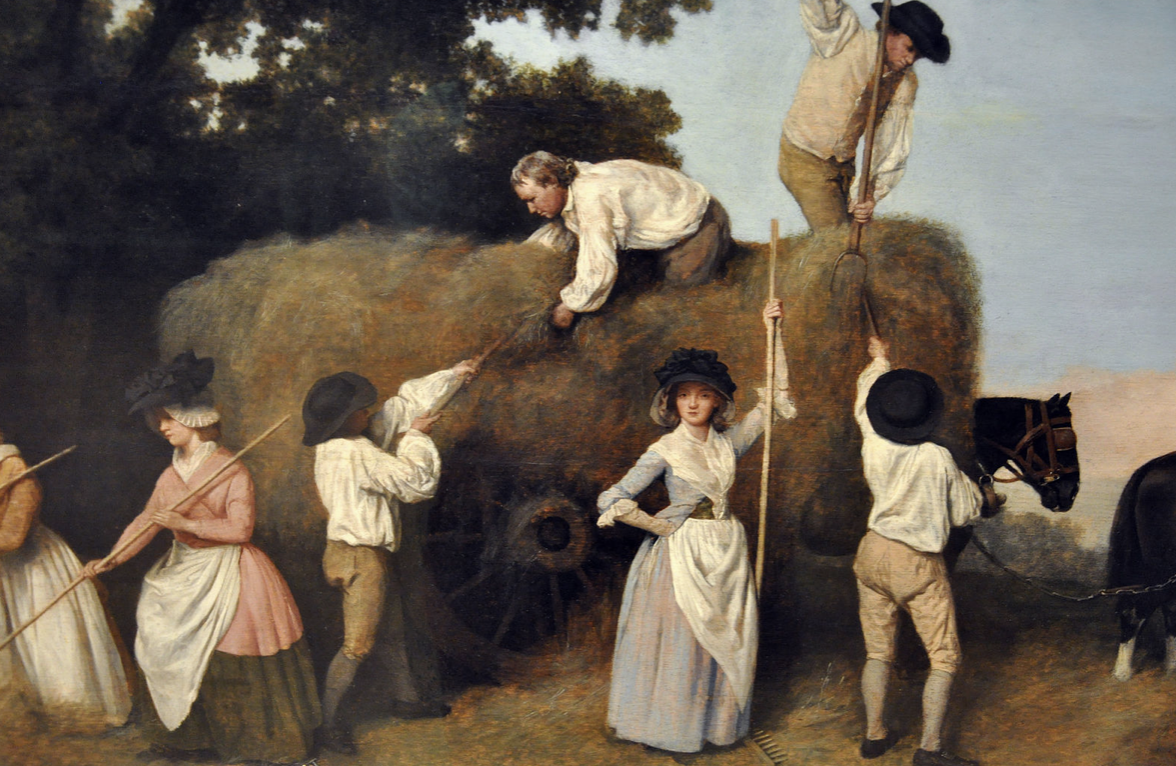
“The Haymakers” by George Stubbs provides a different perspective on painted family portraits, as it captures the lives of working-class individuals in the 18th century. Stubbs, known for his equestrian art, created this remarkable portrait of a rural family labouring in the fields.
This poignant depiction of a farming family at work offers a stark contrast to the opulent family portraits of the aristocracy. Stubbs’s attention to detail and the emotional depth he infuses into the scene elevate “The Haymakers” into a powerful testament to the labourers who toiled to sustain their families and communities.
-
Marie Antoinette Family Portrait by Élisabeth Vigée le Brun
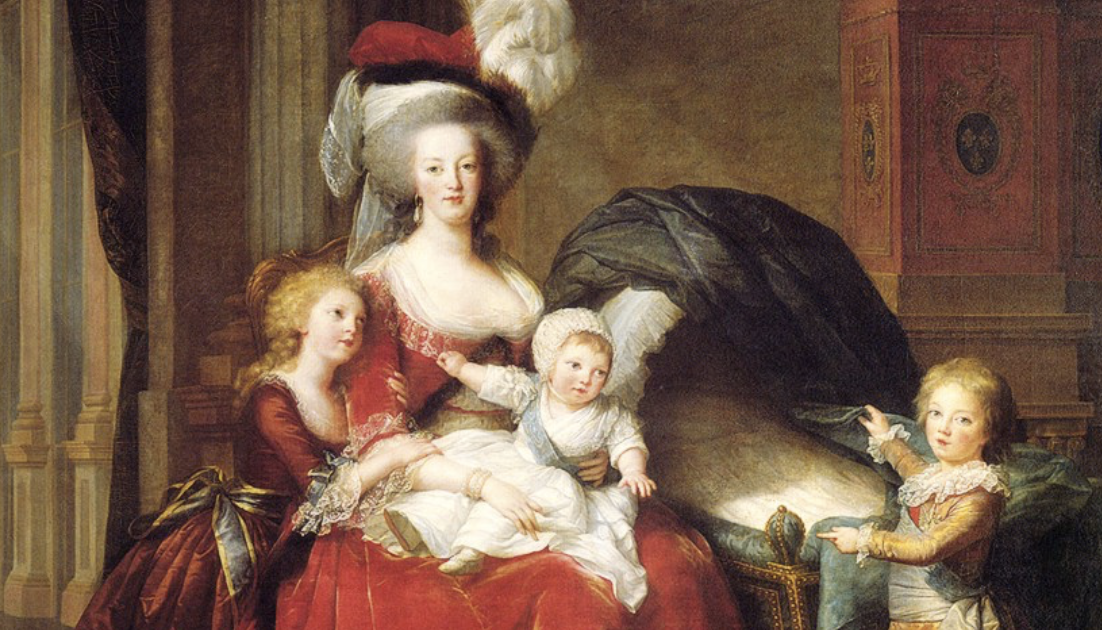
The famous Marie Antoinette family portrait by Élisabeth Vigée le Brun has been known as a national treasure in France and a symbol of Queen Marie Antoinette’s motherhood during a time when her reputation was unsteady.
Marie Antoinette’s reputation during her time as the Dauphine and later the queen of France took a hit due to her extravagant lifestyle and love for excess. She wasn’t well-received by the public, leading to efforts to improve her image by emphasising her more positive and relatable qualities, particularly her role as a mother. This is when King Louis XVI decided to have Élisabeth Vigée le Brun create a painting featuring Marie Antoinette and all her children.
Élisabeth Vigée le Brun was already familiar to the French Royal Court when she received this royal commission. Word of her talent for painted family portraits had reached Marie Antoinette, who was aware of her successful career as a portrait artist in France. As a result, she chose le Brun to paint various portraits, including this family portrait.
-
The Potato Eaters (1885) – Vincent Van Gogh
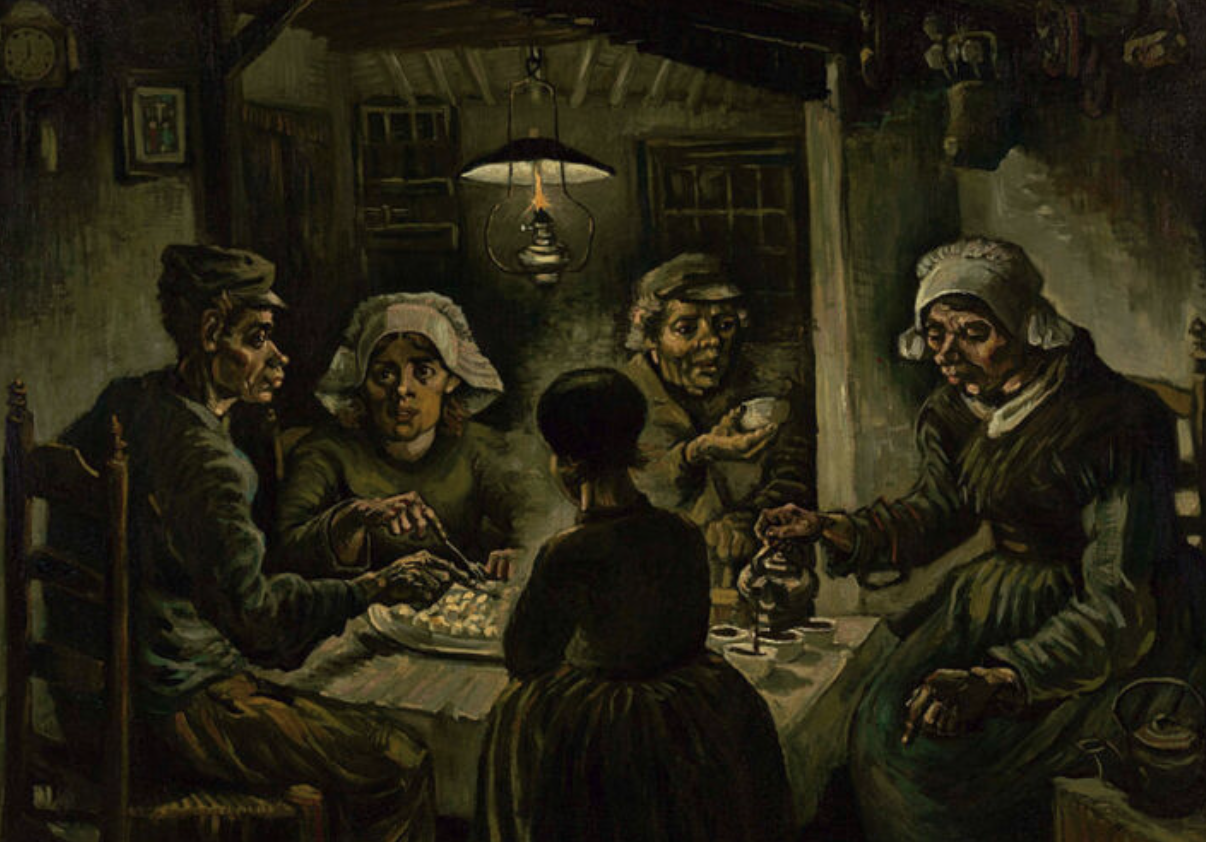
“The Potato Eaters,” one of Vincent Van Gogh’s early significant paintings portrays a humble Dutch peasant family gathered around a table. The characters are depicted with rugged and coarse features, almost deformed and grotesque, emphasising their weary and hopeless demeanour.
Van Gogh’s exploration of peasant life was a recurring theme in his art, with “The Potato Eaters” being a testament to his fascination with this subject. In a letter to his brother Theo from that period, Van Gogh expressed his aspiration to immortalise the labouring peasants who predominantly survived on potatoes. This masterpiece stands as a poignant tribute to the demanding and often unappreciated manual labor of peasants while also seeking to evoke empathy from the public for this social class.
-
The Royal Family: A Centenary Portrait (2000) – John Wonnacott
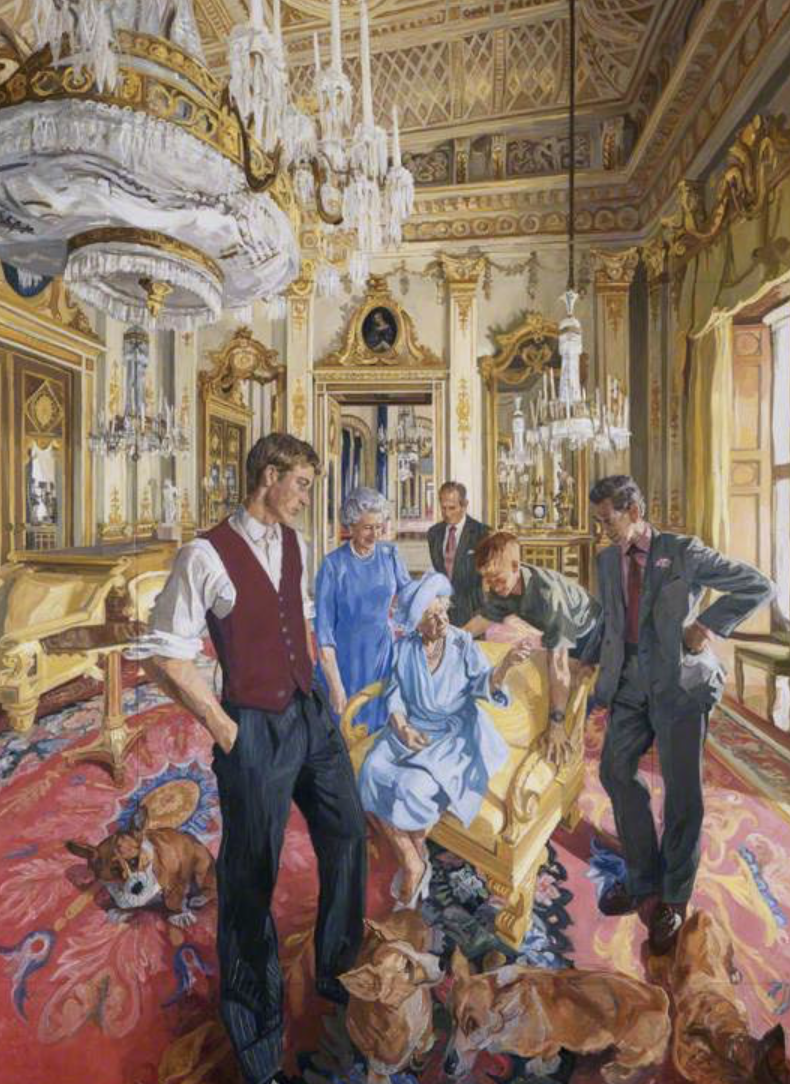
Commissioned for the celebration of the Queen Mother’s 100th birthday. The unique royal portrait stands over twelve feet tall and is full of colour, activity and movement.
The relaxed and unusual composition of the family portrait works in stark contrast against more traditional family portraits painted for the royal family.
The painting features four generations of the royal family including the Queen’s favoured dogs.
- The Family of Man (1955) – Edward Steichen
Another famous painted family portrait is “American Gothic” by Grant Wood, an iconic representation of rural American life during the Great Depression. The painting features a stern-faced farmer and his daughter – often mistakenly assumed to be his wife, standing before a farmhouse adorned with the distinctive Gothic window. Grant Wood was inspired to include what is now known as the American Gothic House in Eldon, Iowa, along with the kind of people he believed should live in that house.
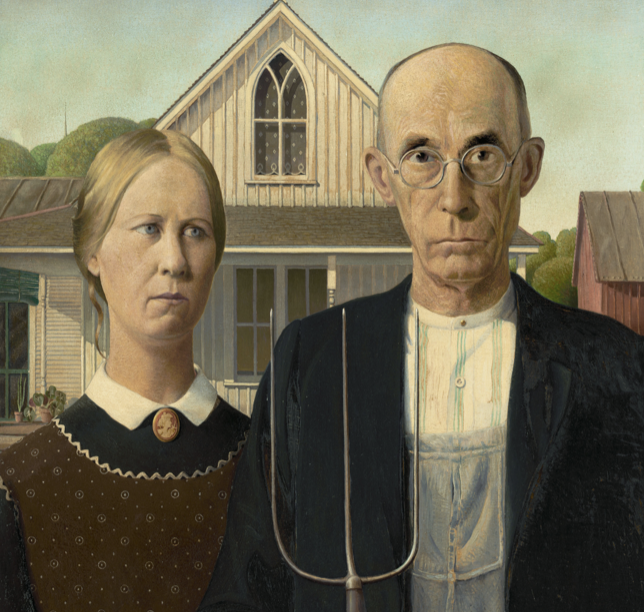
One of many painted family portraits that has become a symbol of American resilience and the enduring spirit of rural communities during challenging times. Wood’s meticulous attention to detail and the portrayal of stoic determination make “American Gothic” an enduring emblem of American family values.
American Gothic is a frequently parodied image. It has been lampooned in Broadway shows and television shows. It has also been parodied in marketing campaigns, pornography, and by couples who recreate the image photographically by facing a camera in the same way, one of them holding a pitchfork or other object in its place.
Check out top-rated local artists near you!
Are you an artist ? Sign Up










